The iPhone 13 family presented by Apple that evening will be launched in the four well-known sizes: iPhone 13 mini, iPhone 13, iPhone 13 Pro and iPhone 13 Pro Max. The smartphones in common are smaller Face ID notches, the A15 Bionic, new cameras and larger batteries. The Pro models come with ProMotion for up to 120 Hz.
The three known sizes from the previous year
Apple adopts the form factors known from the iPhone 12 with 5.4 inches, two 6.1 inches and 6.7 inches and introduces visual changes elsewhere. On all four smartphones, the area of the notch, which accommodates the sensors for Face ID, the front camera and the loudspeaker for making calls and for audio playback, has been reduced by 20 percent, leaving a little more space for the OLED display in the left and right right upper area of the front is created. Face ID is still the only biometric option for registration, according to the (ultimately unfounded) rumors, Touch ID embedded in the display did not make it into the devices.
These are iPhone 13 and iPhone 13 mini
New arrangement the dual camera
Apple has slightly adapted the layout of the cameras of the iPhone 13 mini and iPhone 13, which both still get by with two instead of three lenses, but diagonally opposite each other instead of being arranged vertically on an axis.
The OLED display creates 800 cd/m²
Apple lays the display with a higher brightness from now up to 800 cd/m² in normal operation and up to 1,200 cd/m² in HDR operation. The new OLED panel should have a higher energy efficiency and thus be able to maintain the maximum brightness for a longer period of time.
-
 iPhone 13 mini and iPhone 13 (picture: Apple)
iPhone 13 mini and iPhone 13 (picture: Apple)
picture 1 of 9
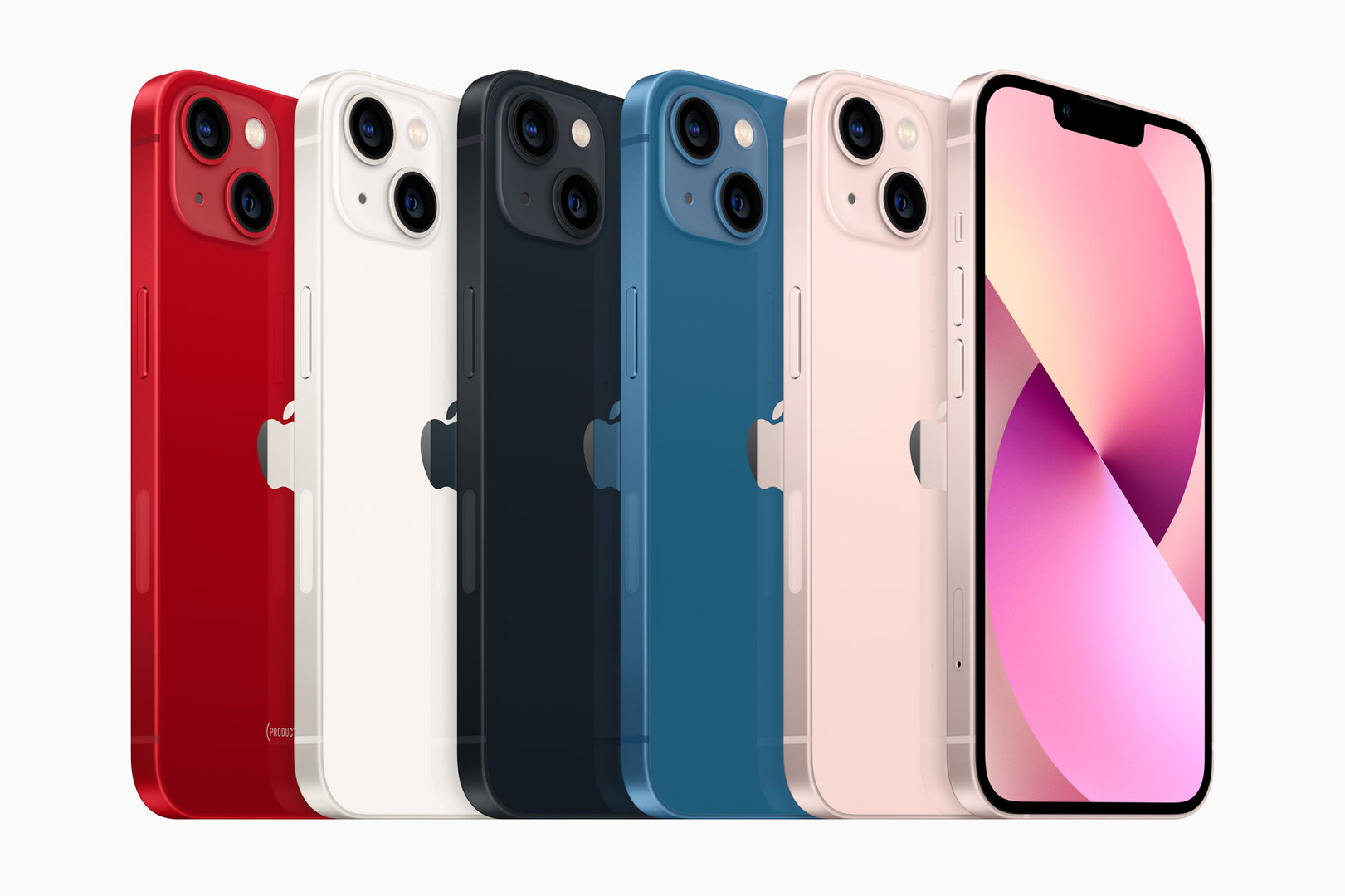 iPhone 13 mini and iPhone 13
iPhone 13 mini and iPhone 13 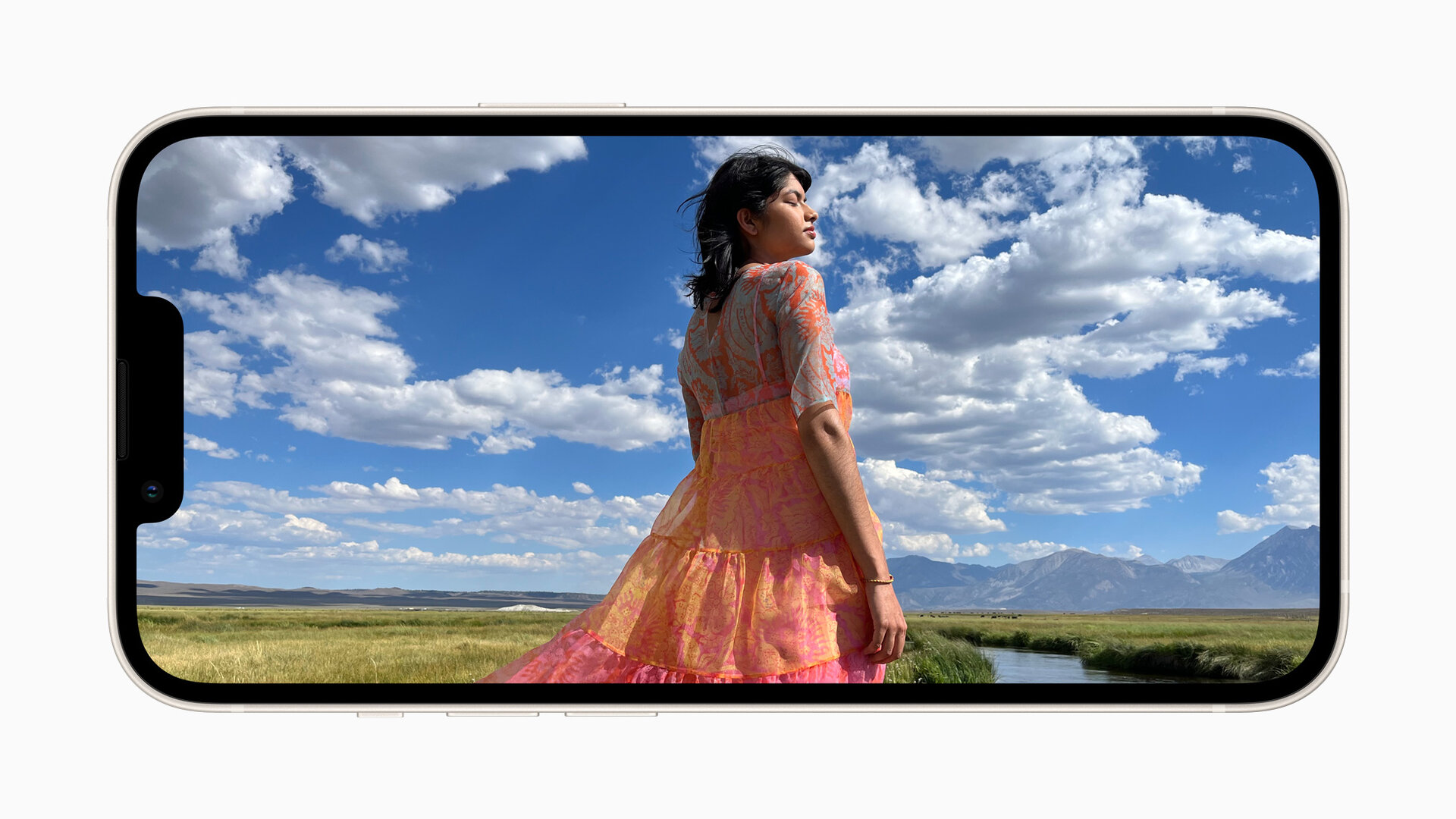 iPhone 13 mini and iPhone 13
iPhone 13 mini and iPhone 13 
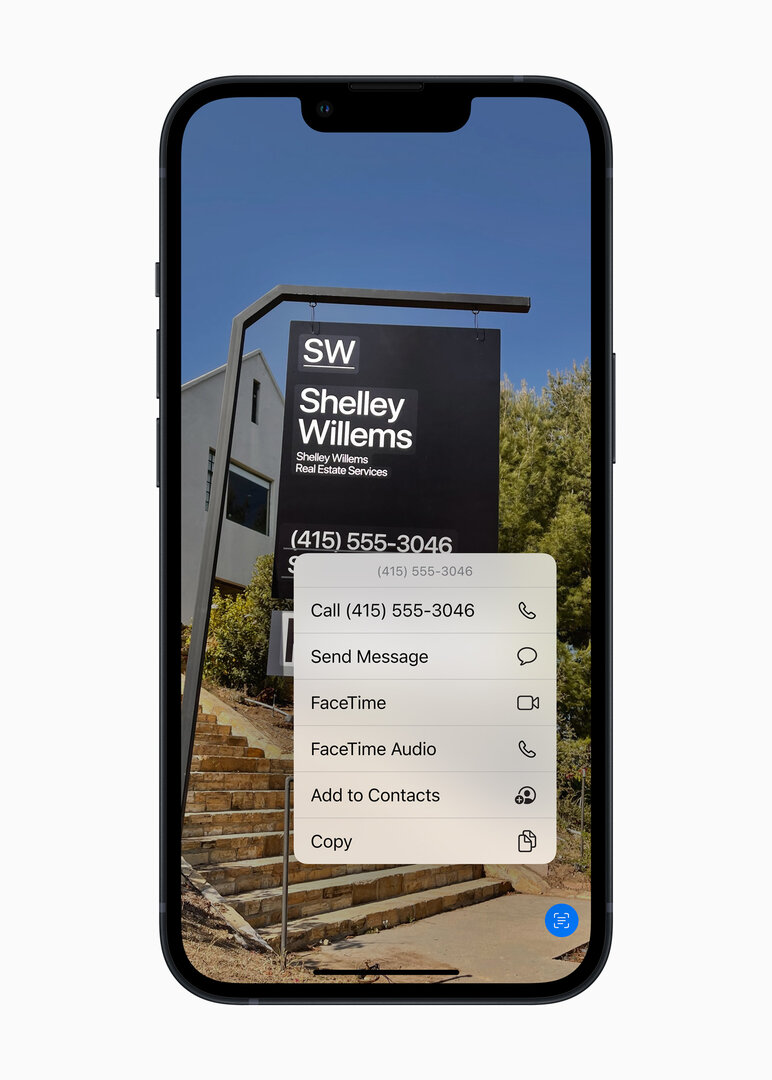 iPhone 13 mini and iPhone 13
iPhone 13 mini and iPhone 13 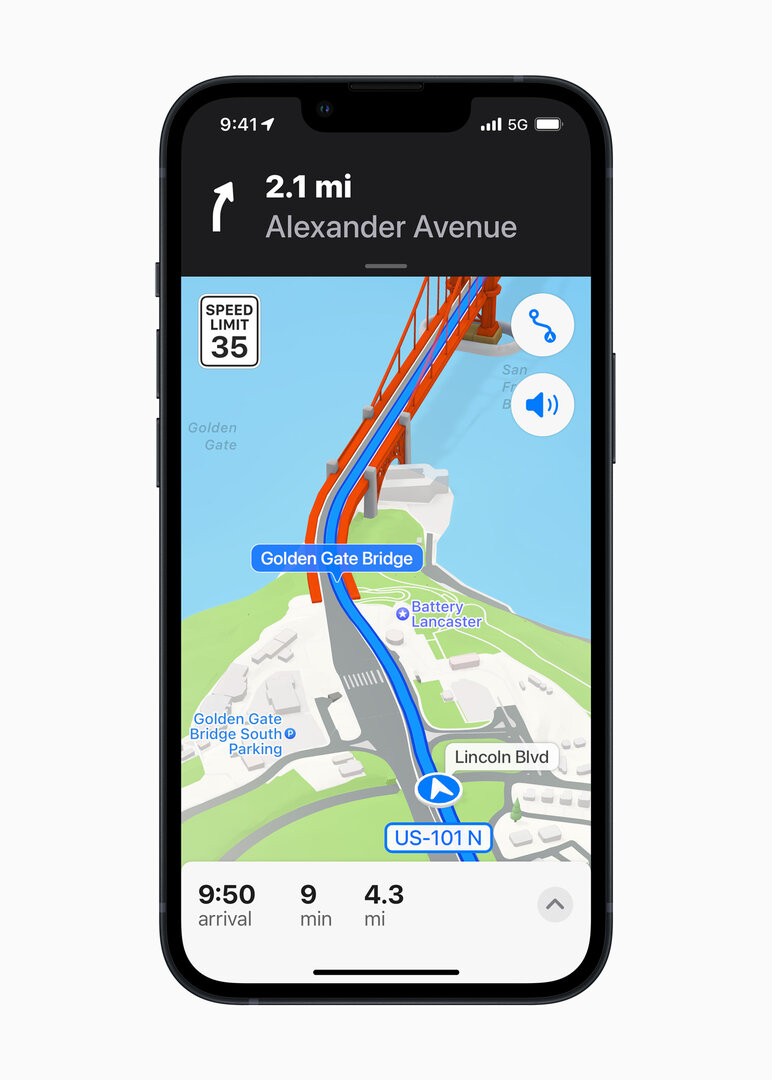 iPhone 13 mini and iPhone 13
iPhone 13 mini and iPhone 13  iPhone 13 mini and iPhone 13
iPhone 13 mini and iPhone 13 A15 Bionic with quad-core GPU
Under the hood is the A15 Bionic, a new 5 nm chip developed by Apple that has 15 billion transistors. The SoC is equipped with a total of six CPU cores, two of which are performance cores and four are efficiency cores. Apple states a lead of 50 percent in the area of CPU performance compared to the fastest chip in the competition. Apple's latest GPU has four cores and is said to be 30 percent faster than the best chip in the competition – five GPU cores are active in the Pro models and in the new iPad mini.
Apple has also accelerated the Neural Engine for machine learning tasks to 15.8 TOPS. Apple does not make a direct comparison to the predecessor, which is probably for a reason: As can be seen from the statements on the performance of the A15 Bionic in the new iPad mini, the CPU treads on the spot. It remains to be seen whether Apple couldn't get faster or didn't want to go faster.
cinema mode with shallow depth of field
The A15 Bionic also has a new image processor that enables features such as the new cinema mode for video recordings with a shallow depth of field. In this mode, the smartphone supports intelligent focus shifting, for example from the foreground to the background and vice versa. The iPhone 13 should anticipate dynamic changes live during the recording and adjust the image accordingly. If a recorded person looks in the foreground towards the background, this movement is recognized and converted into a focus shift. This process also works in the opposite direction. Manual intervention and tracking of marked objects is also possible. iMovie for iOS allows you to adjust the focus level afterwards. iMovie and Final Cut Pro for macOS should be given the function “later”. In cinema mode the iPhone 13 (mini) records in up to Full HD with 30 FPS, in normal video mode it is 4K60 including Dolby Vision.
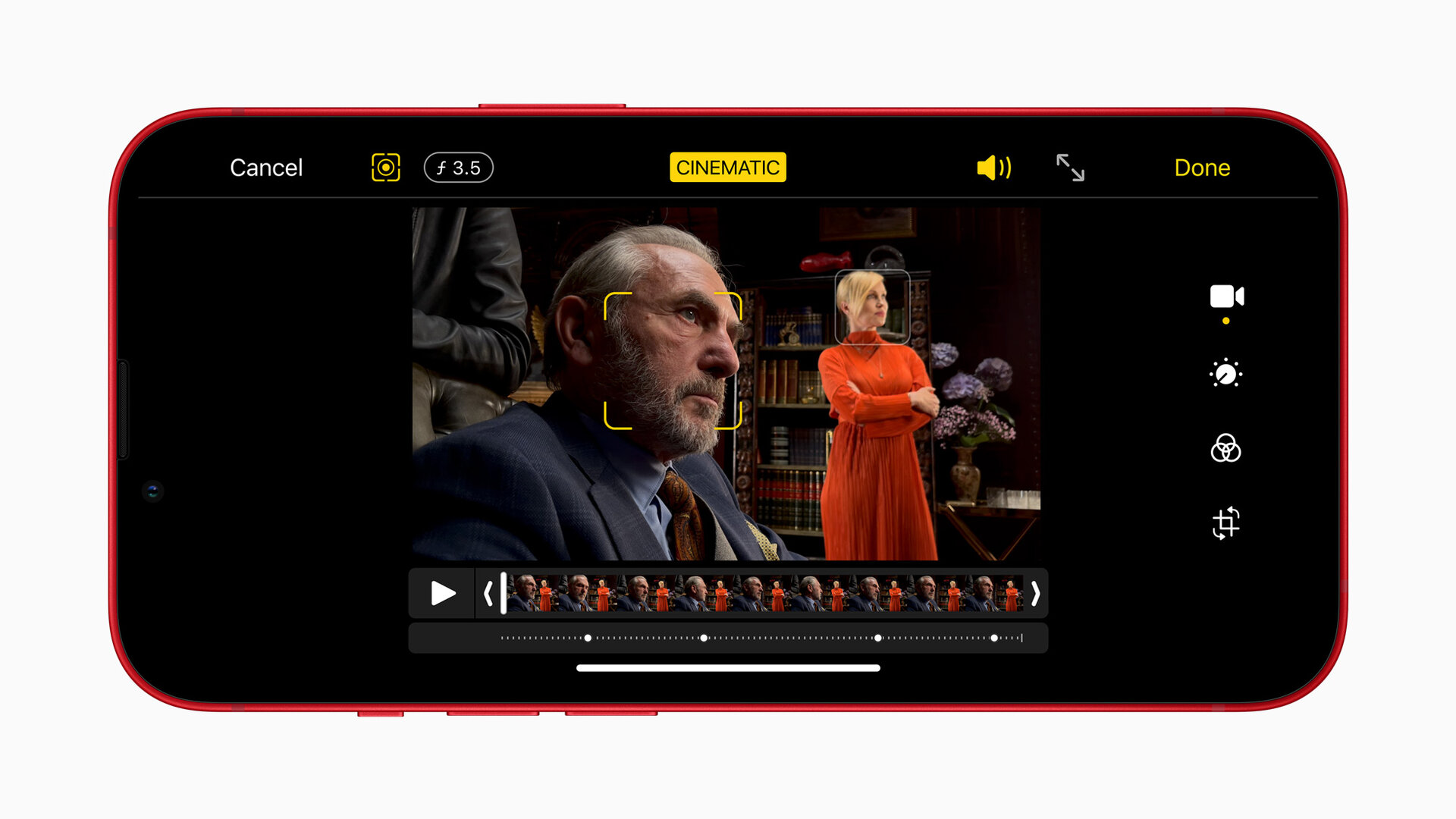 iPhone 13 mini and iPhone 13 – cinema mode (Image: Apple)
iPhone 13 mini and iPhone 13 – cinema mode (Image: Apple) Cameras capture more light
There are no new photo modes, but Apple has revised the hardware. iPhone 13 mini and iPhone 13 come with a new wide-angle main camera, which with 1.7 μm pixels and f/1.6 aperture is supposed to capture 47 percent more light with the same exposure time. 100 percent of the pixels are used as focus pixels for fast autofocus. For the first time outside of the Pro series, there is sensor shift stabilization directly on the sensor instead of in the lens – also with the iPhone mini. The wide-angle lens still has a focal length of 26 mm in 35mm format, while the ultra-wide-angle camera with an aperture of f/2.4 is still 13 mm. Image processing is handled by an improved Smart HDR 4 and Apple's Deep Fusion.
-
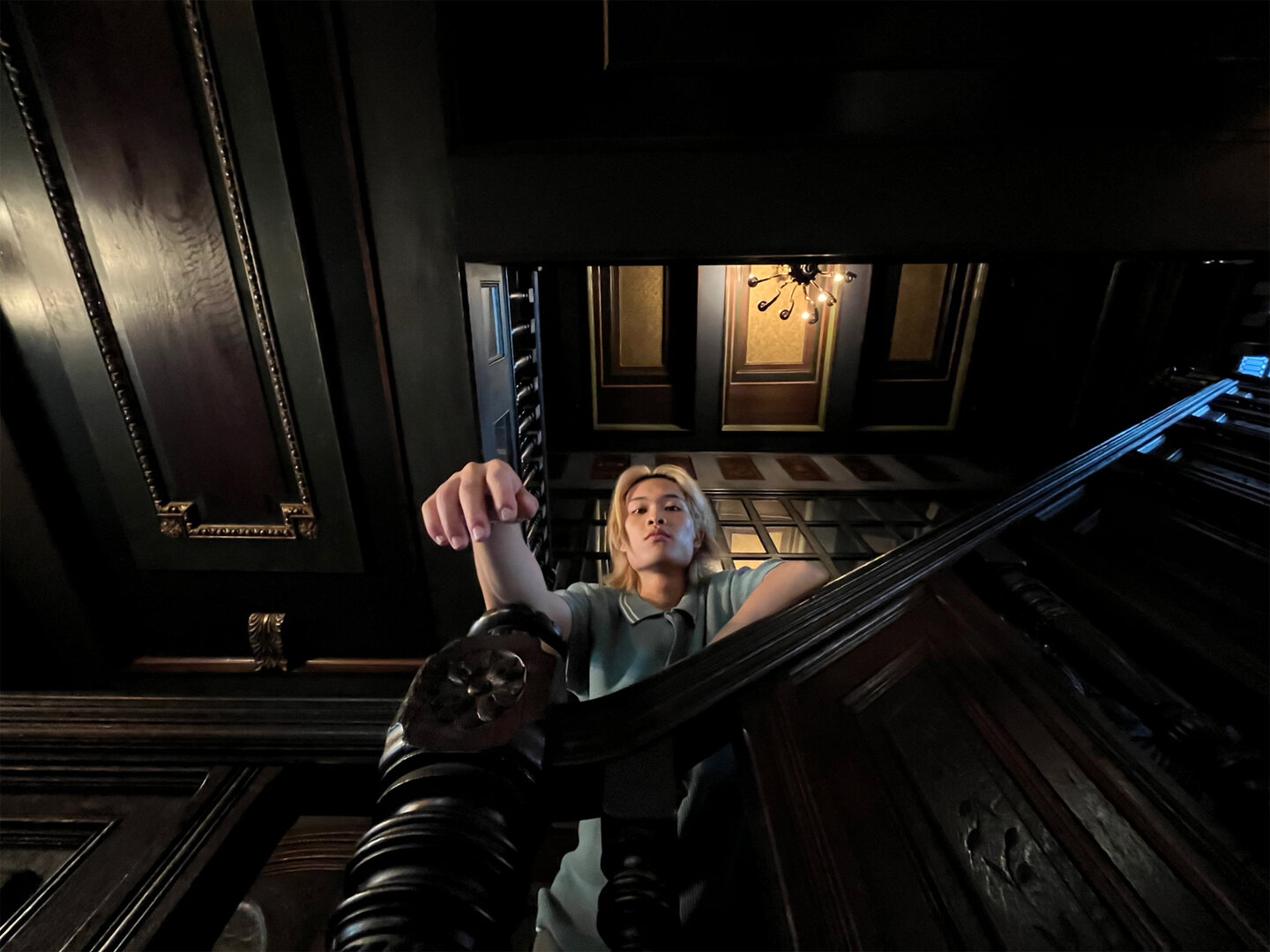 Example photo (Image: Apple)
Example photo (Image: Apple)
Image 1 of 7
 Example photo
Example photo  Example photo
Example photo /figure>  Sample photo
Sample photo
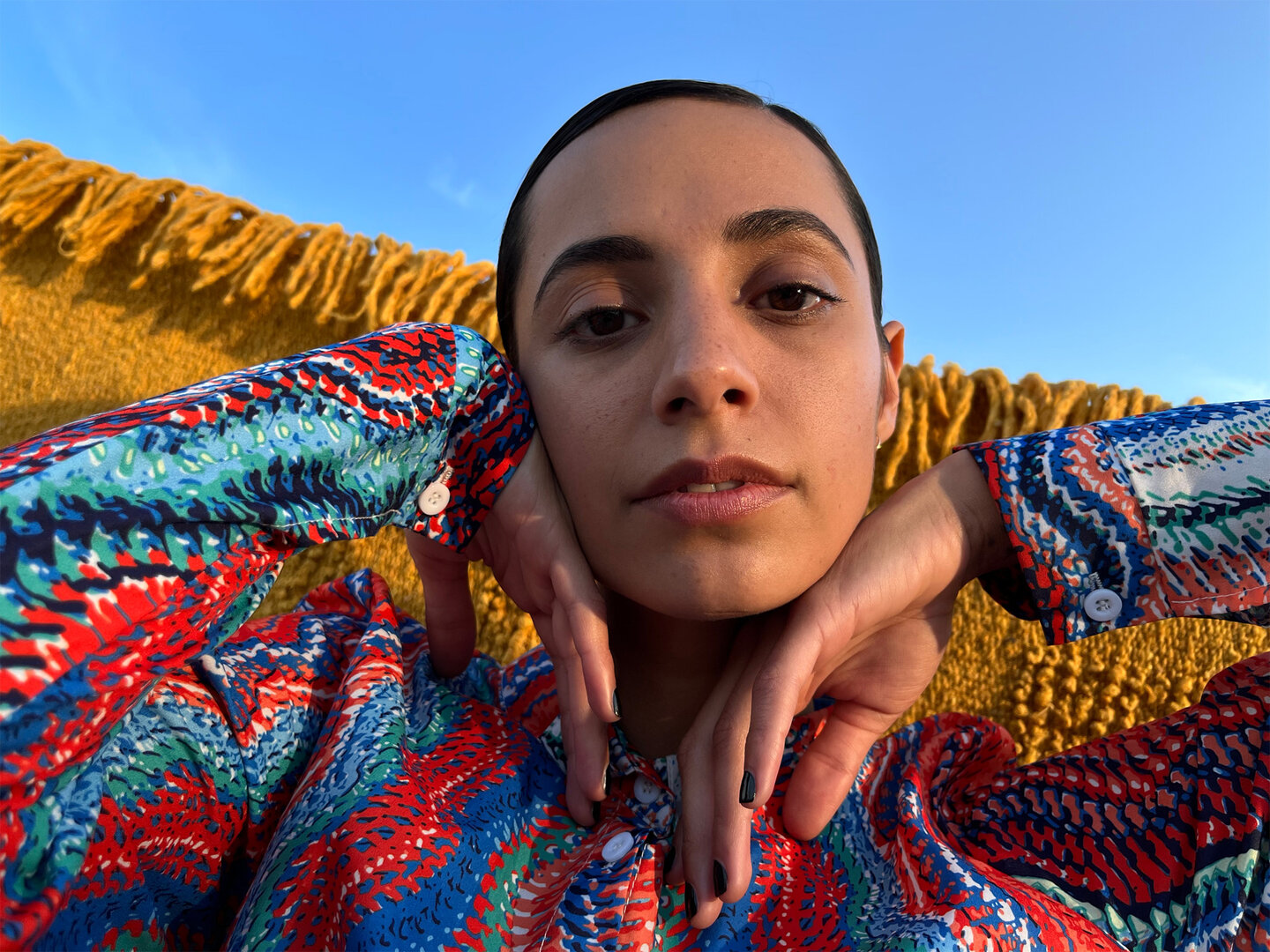 sample photo
sample photo 
Longer battery life
Both new versions are equipped with larger batteries, for which Apple specifies up to 1.5 hours longer runtimes for the iPhone 13 mini and up to 2.5 hours longer for the iPhone 13. The total running times for video offline, video streamed and audio are given as 17 hours, 13 hours and 55 hours for the smaller version and 19 hours, 15 hours and 75 hours for the larger model.
Start on September 24th from 799 euros
The iPhone 13 (mini) is available in five colors: rose, blue, midnight, polar star and (PRODUCT) RED. Apple plans to take orders this week on Friday from 2 p.m. German time and start selling on September 24th. The iPhone 13 mini starts with 128 GB instead of 64 GB and costs from 799 euros. For the iPhone 13, also with 128 GB, Apple is calling 899 euros.
These are iPhone 13 Pro and iPhone 13 Pro Max
iPhone 13 Pro and iPhone 13 Pro Max are also equipped with the A15 Bionic, but Apple now distinguishes between two different binnings for the iPhone after the M1: 4-core GPU in the non-Pro and 5-core GPU with 50 Percent higher performance than the best chip of the competition only for the pro smartphones.
-
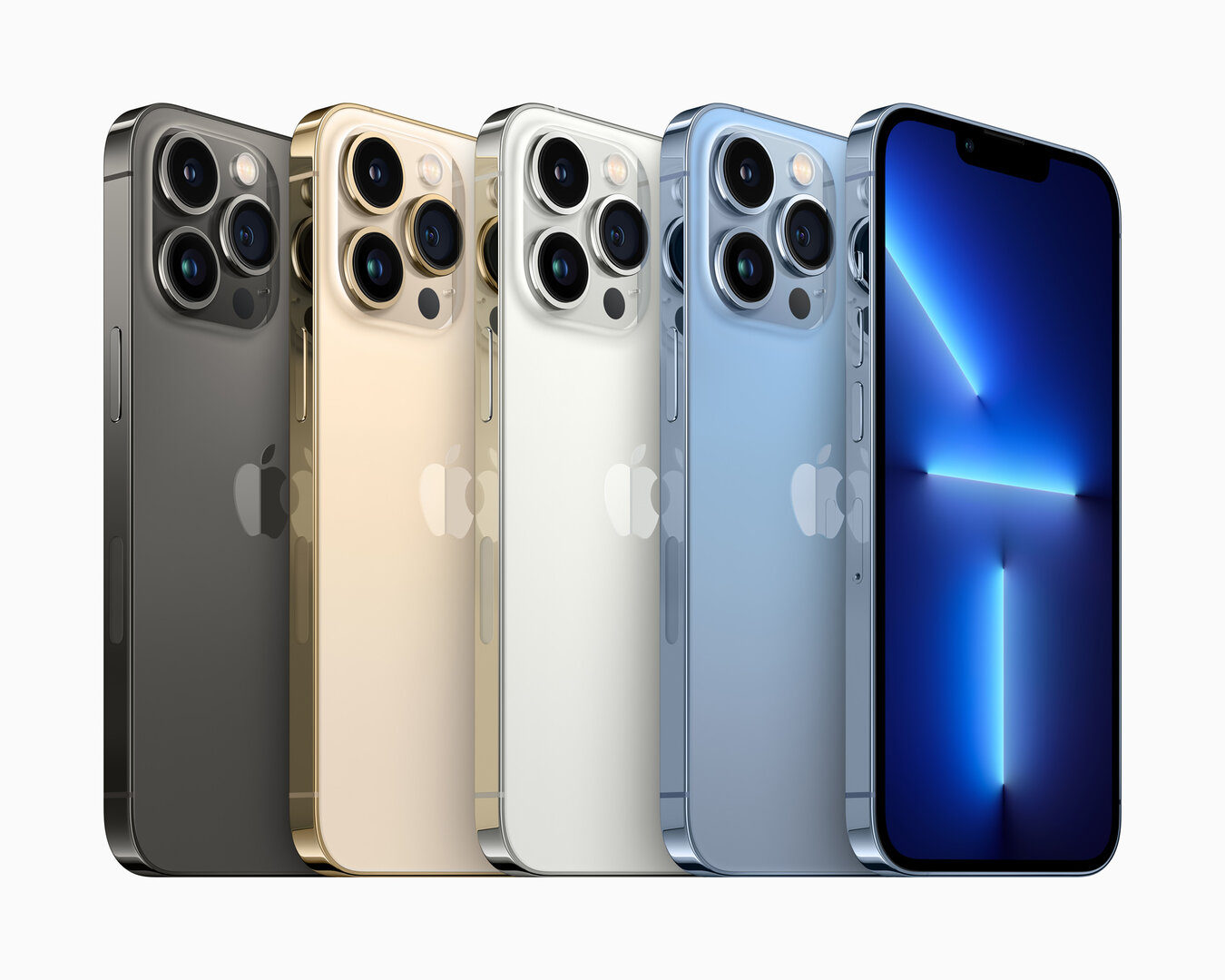 iPhone 13 Pro and iPhone 13 Pro Max (picture: Apple)
iPhone 13 Pro and iPhone 13 Pro Max (picture: Apple)
Image 1 of 8
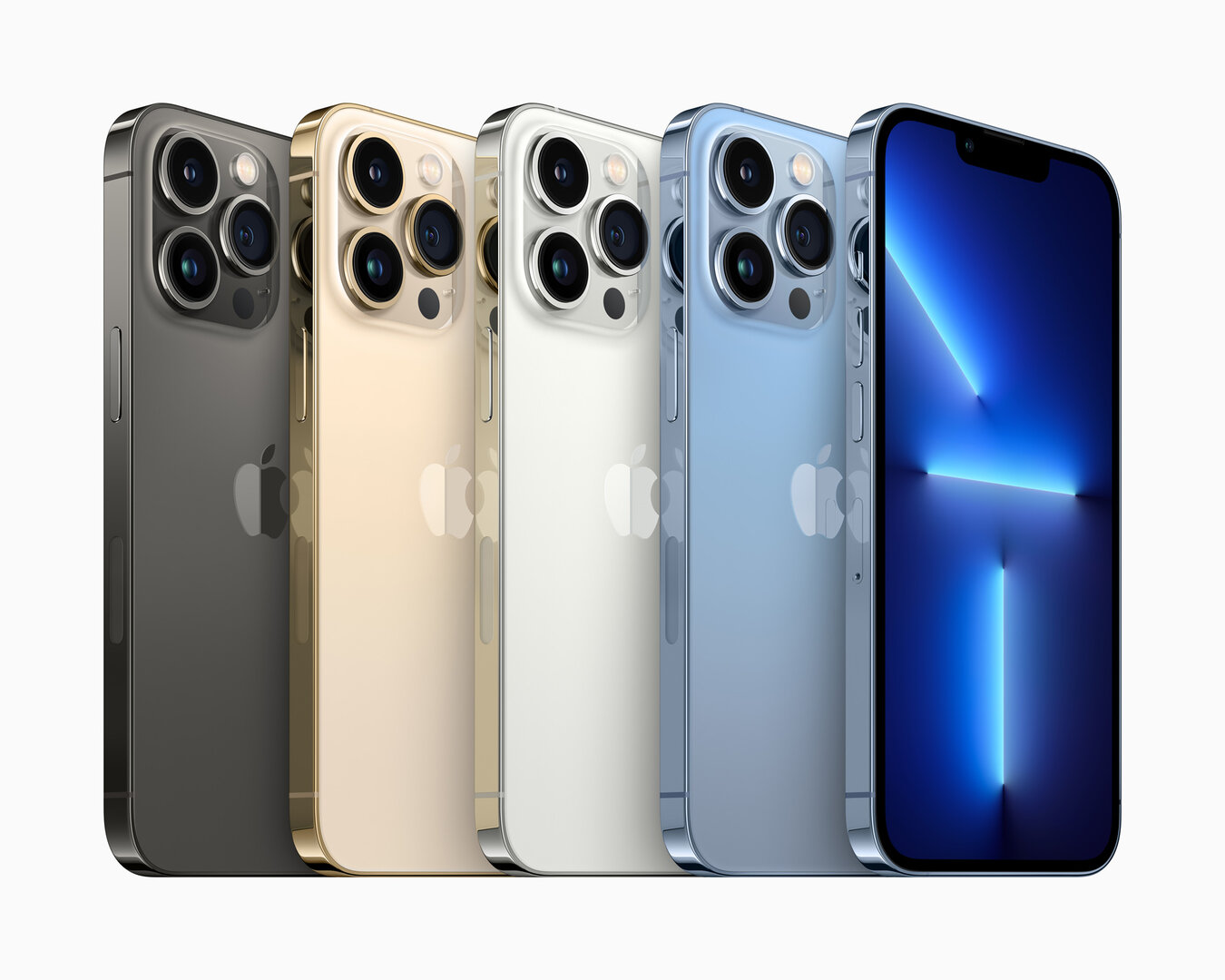 iPhone 13 Pro and iPhone 13 Pro Max
iPhone 13 Pro and iPhone 13 Pro Max  iPhone 13 Pro and iPhone 13 Pro Max
iPhone 13 Pro and iPhone 13 Pro Max 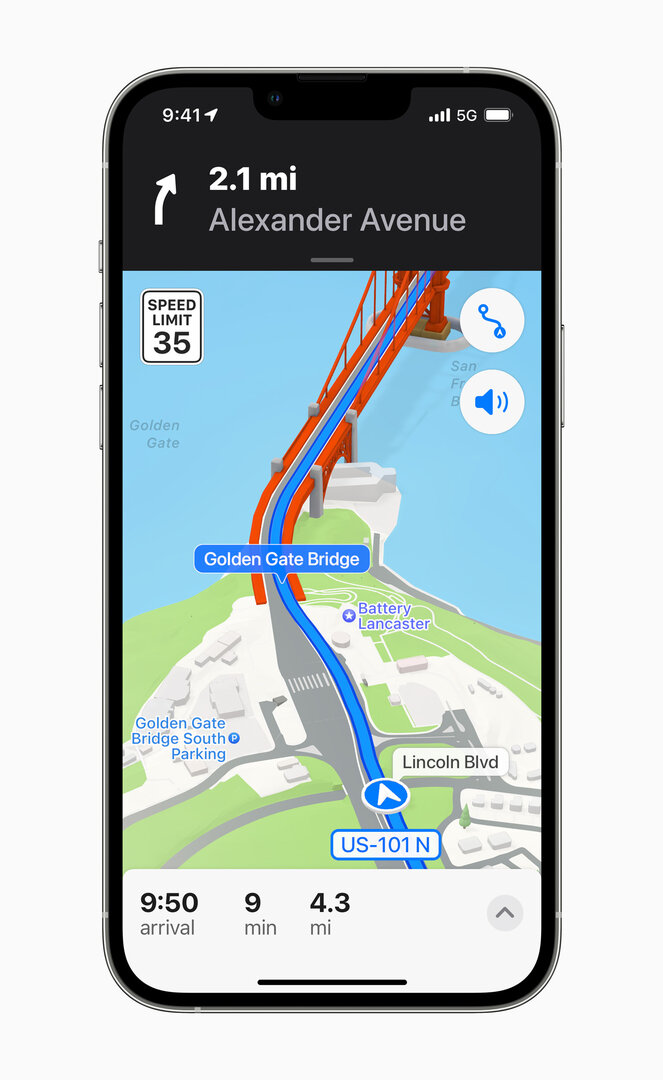 iPhone 13 Pro and iPhone 13 Pro Max
iPhone 13 Pro and iPhone 13 Pro Max 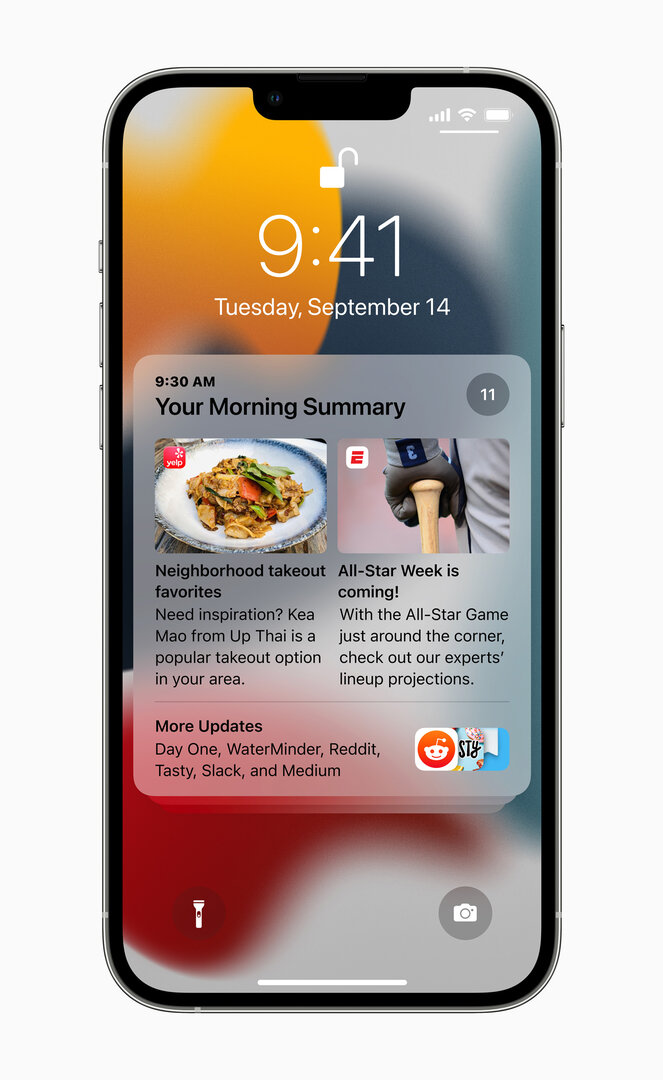 iPhone 13 Pro and iPhone 13 Pro Max
iPhone 13 Pro and iPhone 13 Pro Max  iPhone .jpg 13 Pro and iPhone 13 Pro Max
iPhone .jpg 13 Pro and iPhone 13 Pro Max 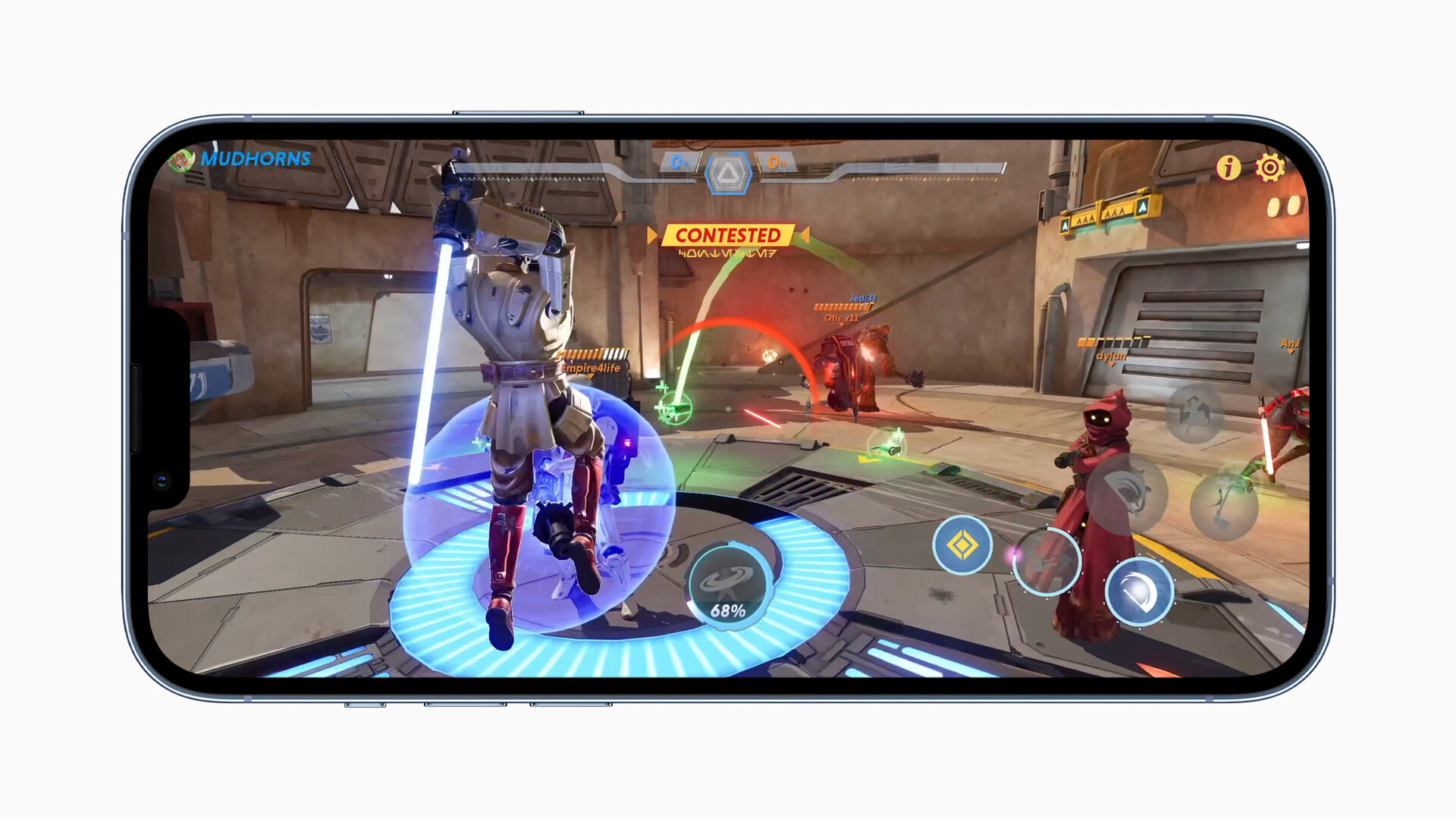 iPhone 13 Pro and iPhone 13 Pro Max
iPhone 13 Pro and iPhone 13 Pro Max 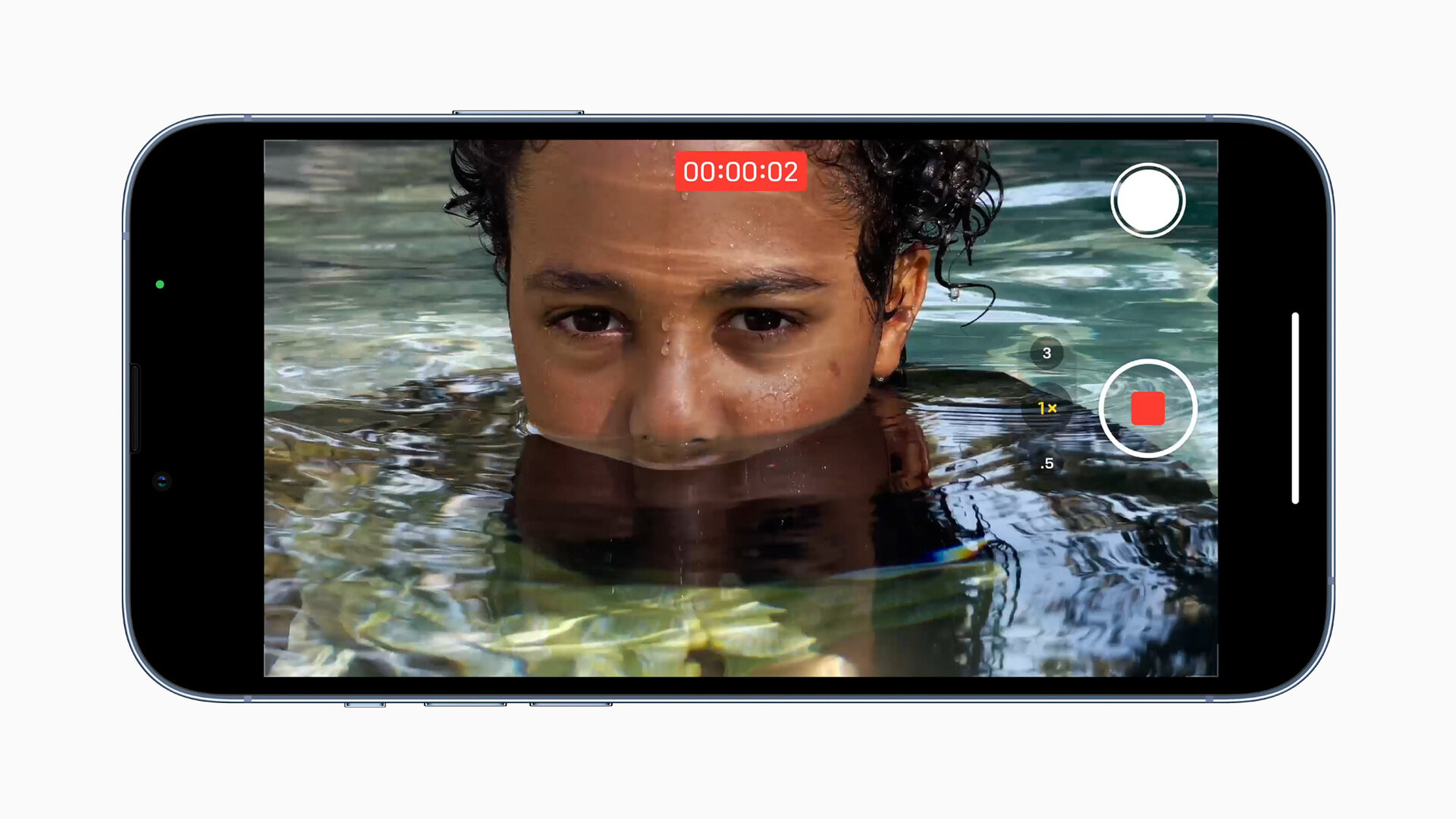 iPhone 13 Pro and iPhone 13 Pro Max
iPhone 13 Pro and iPhone 13 Pro Max < h3 class = "text-width text-h3" id = "section_promotionoled_mit_10hz_bis_120hz"> ProMotion-OLED with 10 Hz to 120 Hz
The faster GPU is intended for games with 120 FPS, for example. With the iPhone 13 Pro and iPhone 13 Pro Max, Apple is introducing ProMotion for the first time in its own smartphone, which was previously reserved for the iPad Pro. Apple works with an adaptive refresh rate of 10 Hz to 120 Hz, which adapts dynamically to the content displayed. Apple also takes into account how quickly the user navigates through content and adjusts the refresh rate accordingly in order to save energy. ProMotion is accompanied by a brighter OLED panel with a smaller notch that takes up 20 percent less space. The panel can work permanently with 1,000 instead of 800 cd/m² and in HDR mode 1,200 cd/m² are offered as before.
Large pixels and macro for both Pro models
Only the two Pro smartphones are equipped with three instead of two rear cameras. While last year only the larger iPhone 12 Pro Max was equipped with the largest sensor for the main camera, there are now 12 megapixels with 1.9 μm pixels for both smartphones. In conjunction with the more open, fixed aperture of f/1.5, Apple wants to be able to capture 120 percent more light for photos and videos. The focal length of the primary camera is again 26 mm. 92 percent more light is mentioned for the new ultra-wide angle camera with f/1.8, the new 13 mm lens is also designed for macro photos and macro videos. The minimum focus distance of this camera is 2 cm. And with the new Tele, Apple has increased its focal length from 2.5x to 3.0x optical magnification at f/2.8 with a focal length of 77 mm. In terms of stabilization, there is Sensor Shift for the main camera and a classic OIS for the new Tele, which now also offers a night mode.
-
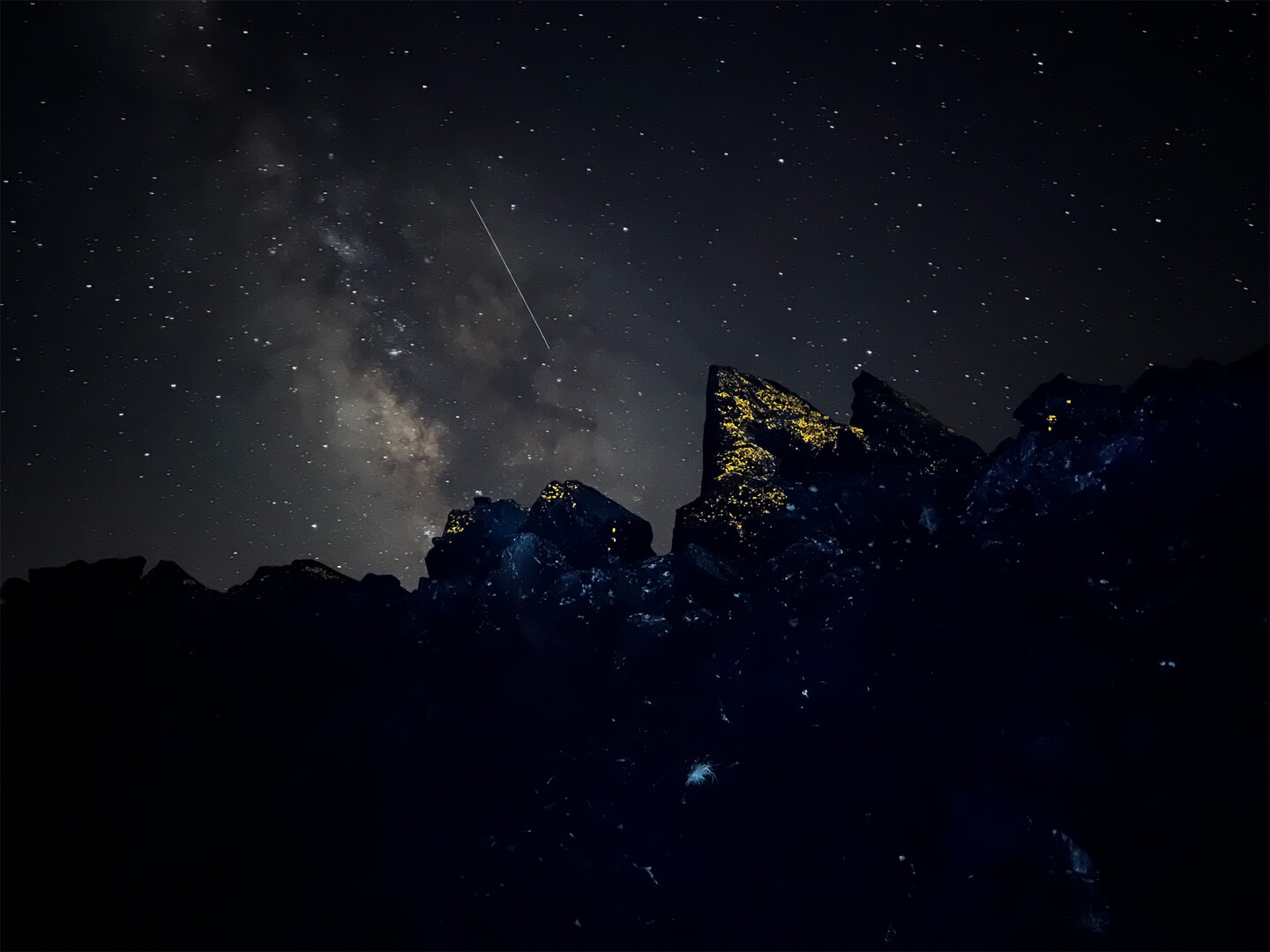 Example photo (picture: Apple)
Example photo (picture: Apple)
picture 1 of 12
 Example photo
Example photo  Example photo
Example photo  Example photo
Example photo  Example photo
Example photo  figure>
figure>  Example photo
Example photo  Example photo
Example photo Video recordings in ProRes -Format
In addition to the cinema mode, videos are added, which can also be recorded later in the year with the ProRes format developed by Apple for lossy compressed video data. The aim is to offer an end-to-end pro workflow from the iPhone to apps such as Final Cut Pro to output in professional productions. ProRes recordings are then made without Dolby Vision and are possible with a maximum of 4K at 30 FPS. ProRes is likely to be a real memory hog, because Apple limits the feature to Full HD with 30 FPS on the 128 GB models. ProRes and cinema mode are also available for the smartphone's front camera.
Larger batteries for professionals
Apple also advertises longer runtimes for the two iPhone 13 Pros: up to 1.5 hours more for the iPhone 13 Pro and up to 2.5 hours more for the iPhone 13 Pro Max. The total runtimes for video offline, video streamed and audio are included 22 hours, 20 hours and 75 hours for the smaller version and 28 hours, 25 hours and 95 hours for the larger model. Charging can be wired or again via MagSafe with a maximum of 15 watts or 7.5 watts via the Qi standard. Wired, 50 percent capacity can be restored within 30 minutes via a 20-watt USB-C power supply that is not included, says Apple.
Start from September 24th also with 1 TB
Pre-orders for iPhone 13 Pro and iPhone 13 Pro Max are possible from September 17th, the new smartphones will be offered from September 24th in the colors graphite, gold, silver and sierra blue as well with storage capacities of 128 GB, 256 GB, 512 GB and, for the first time, 1 terabyte. The starting price of the iPhone 13 Pro is 1,149 euros, the iPhone 13 Pro Max is 1,249 euros.
Apple iPhone 13 mini Apple iPhone 6Apple iPhone 6 PlusApple iPhone 6sApple iPhone 6s PlusApple iPhone 7Apple iPhone 7 PlusApple iPhone 8Apple iPhone 8 PlusApple iPhone 11Apple iPhone 11 ProApple iPhone 11 Pro MaxApple iPhone 12Apple iPhone 12 miniApple iPhone 12 Pro MaxApple iPhone 12 ProApple iPhone 13 ✔ iPhone 13 mini ✔Apple iPhone 13 Pro ✔Apple iPhone 13 Pro Max ✔Apple iPhone XApple iPhone XrApple iPhone XsApple iPhone Xs Max Apple iPhone 13 Apple iPhone 6Apple iPhone 6 PlusApple iPhone 6sApple iPhone 6s PlusApple iPhone 7Apple iPhone 7 PlusApple iPhone 8Apple iPhone 8 PlusApple iPhone 11Apple iPhone 11 ProApple iPhone 11 Pro MaxApple iPhone 12Apple iPhone 12 miniApple iPhone 12 Pro MaxApple iPhone 12 ProApple iPhone 13 ✔Apple iPhone 13 mini ✔Apple iPhone 13 Pro ✔Apple iPhone 13 Pro Max ✔Apple iPhone XApple iPhone XrApple iPhone XsApple iPhone Xs Max Apple iPhone 13 Pro Apple iPhone 6Apple iPhone 6 PlusApple iPhone 6sApple iPhone 6s PlusApple iPhone 7Apple iPhone 7 PlusApple iP hone 8Apple iPhone 8 PlusApple iPhone 11Apple iPhone 11 ProApple iPhone 11 Pro MaxApple iPhone 12Apple iPhone 12 miniApple iPhone 12 Pro MaxApple iPhone 12 ProApple iPhone 13 ✔Apple iPhone 13 mini ✔Apple iPhone 13 Pro ✔Apple iPhone 13 Pro Max ✔Apple iPhone XApple iPhone XrApple iPhone XsApple iPhone Xs Max Apple iPhone 13 Pro Max Apple iPhone 6Apple iPhone 6 PlusApple iPhone 6sApple iPhone 6s PlusApple iPhone 7Apple iPhone 7 PlusApple iPhone 8Apple iPhone 8 PlusApple iPhone 11Apple iPhone 11 ProApple iPhone 11 Pro MaxApple iPhone 12Apple iPhone 12 miniApple iPhone 12. Pro MaxApple iPhone 12 12 ProApple iPhone 13 ✔Apple iPhone 13 mini ✔Apple iPhone 13 Pro ✔Apple iPhone 13 Pro Max ✔Apple iPhone XApple iPhone XrApple iPhone XsApple iPhone Xs Max software:
(when released) iOS 15 display: 5.40 inches, 1,080 × 2,340 to 477 ppi, 60 Hz
OLED, HDR, Ceramic Shield 6.10 inches, 1,170 × 2,532 to 457 ppi, 60 Hz
OLED, HDR, Ceramic Shield 6.10 inches, 1,170 × 2,532 to 457 ppi, 120 Hz to OLED, HDR, Cer amic Shield 6.70 inches, 1,284 × 2,778
457 ppi, 120 Hz
OLED, HDR, Ceramic Shield Operation: Touch, face scanner SoC: Apple A15 Bionic
2 ×?
4 ×?
5 nm, 64-bit GPU: Apple Quad-Core Apple Penta-Core RAM:? Storage: 128/256/512 GB 128/256/512/1,024 GB 1. Camera: 12.0 MP, 2160p
Quad-LED, f/1.6, AF, OIS 12.0 MP, 2160p
Quad-LED, f/1.5, AF, OIS 2nd camera: 12.0 MP, f/2.4, AF 12.0 MP, f/1.8, AF 3rd camera: No 12.0 MP, f/2.8, AF, OIS 4th camera: no 5th camera: no 1st front camera: 12.0 MP, 2160p
display flash, f/2.2 2nd front camera: no GSM: GPRS + EDGE UMTS: DC-HSPA
↓ 42.2 ↑ 5.76 Mbit/s LTE: Advanced Pro 5G: NSA/SA WLAN: 802.11 a/b/g/n/ac/ax Bluetooth: 5.0 Location: A-GPS, GLONASS, BeiDou, Galileo, QZSS Other standards: Lightning, NFC SIM card: Nano-SIM, Dual-SIM battery:?
permanently installed, wireless charging Size (W × H × D): 64, 2 × 131.5 × 7.65 mm 71.5 × 146.7 × 7.65 mm 78.1 × 160.8 × 7.65 mm Protection class: IP68 Weight: 140 g 173 g 203 g 238 g Price: 799 €/€ 919/€ 1,149 € 899/€ 1,019/€ 1,249 € 1,149/€ 1,269/€ 1,499/€ 1,729 € 1,249/€ 1,369/€ 1,599/€ 1,829

